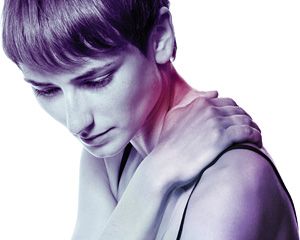New York's highest court of appeals has held that no-fault insurers cannot deny no-fault benefits where they unilaterally determine that a provider has committed misconduct based upon alleged fraudulent conduct. The Court held that this authority belongs solely to state regulators, specifically New York's Board of Regents, which oversees professional licensing and discipline. This follows a similar recent ruling in Florida reported in this publication.
Conservative Care Beats Medication for Neck Pain
A study published in the Jan. 3, 2012 issue of the Annals of Internal Medicine and widely reported by mainstream media suggests conservative care consisting of either spinal manipulation or home exercise is more effective than over-the-counter and prescription medication for relieving acute and subacute neck pain. Spinal manipulative therapy was more effective than medication in both the short and long term, as was home exercise in the form of self-mobilization of the neck and shoulder joints – a point media outlets were quick to emphasize in a classic attempt to downplay the value of the chiropractic intervention.
The study, conducted by Northwestern Health Sciences University under the direction of NHSU Vice President of Research, Dr. Gert Bronfort, and Dean of Research, Dr. Roni Evans, involved 272 adults ages 18-65 with nonspecific mechanical neck pain of two to 12 weeks' duration. Participants were recruited from a university research center and a pain management clinic in Minnesota. Other inclusion criteria included pain equivalent to grade I or grade II according to the Bone and Joint Decade's Task Force on Neck Pain and Its Associated Disorders; and neck pain score of 3 or greater on a 0-10 scale. Exclusion criteria included cervical spine instability, fracture, neck pain referred from peripheral joints or viscera, progressive neurologic deficits, diffuse idiopathic hyperostosis, inflammatory or destructive changes of the cervical spine, previous cervical spine surgery, and blood-clotting disorders, among other criteria.

Subjects were randomized at their second baseline appointment to one of three groups for 12 weeks:
- A spinal manipulative therapy group, which received "manipulation of areas of the spine with segmental hypomobility by using diversified techniques, including low-amplitude spinal adjustments ... and mobilization." According to the study, six chiropractors, each with at least five years' experience, provided treatment, with the specific spinal level to be treated and the number of treatments rendered left to the discretion of the individual chiropractor.
- A home exercise advice group, "with advice provided [by six therapists] in two 1-hour sessions one to two weeks apart. Recommended mobilization exercises included "neck retraction, extension, flexion, rotation, lateral bending motions, and scapular retraction, with no resistance." Participants received a booklet and laminated cards of prescribed exercises, and were advised to perform 5-10 repetitions of each exercise six to eight times daily.
- A medication group monitored by a licensed medical physician, with nonsteroidal anti-inflammatory drugs (NSAIDs), acetaminophen, or both serving as the first line of pharmacological therapy. With patients who did not respond to or could not tolerate these drugs, narcotic medications and muscle relaxants were prescribed. With each patient, the MD determined the type of medication administered and the number of patient visits.
Self-reported outcomes, including pain, were measured six times during the 12-week treatment period in all three groups: at both baseline appointments; two, four, eight and 12 weeks after randomization; and on two occasions post-treatment (weeks 26 and 52). Objective measures of cervical spine motion were measured at four and 12 weeks by seven trained examiners blinded to treatment assignment.
Of the 272 participants, essentially equally assigned to the three treatment groups (91 SMT, 91 home exercise and 90 medication), "improvement in participant-rated pain significantly differed with SMT compared with medication at 12 weeks ... and in longitudinal analyses that incorporated pain ratings every two weeks from baseline to 12 weeks. At 12 weeks, a significantly higher proportion of the SMT group experienced reductions of pain of at least 50% [compared to the medication group]. Differences in participant-related pain improvement between the SMT and [home exercise] groups were smaller and not statistically significant."
Specifically, at week 12, more than 82 percent of the SMT group reported a 50 percent or greater reduction in pain; 57 percent reported at least a 75 percent reduction and 32 percent reported a 100 percent reduction. By comparison, the home exercise group reported pain reductions of 77 percent, 48 percent and 30 percent, respectively, while the medication group reported reductions of only 69 percent, 33 percent and 13 percent.
In terms of long-term improvement, 75 percent of the SMT group reported at least a 50 percent reduction in pain after 26 weeks, while nearly 81 percent reported at least a 50 percent reduction at 52 weeks. At 26 and 52 weeks, 71 percent and 69 percent of the home exercise group, respectively, reported at least a 50 percent reduction in pain. In long-term follow-up, the medication group's improvement fluctuated from 59 percent reporting pain reduction of 50 percent or more at 26 weeks to 69 percent reporting the same reduction at 52 weeks.
"Spinal manipulation therapy and [home exercise advice] led to similar short- and long-term outcomes," stated the authors, "but participants who received medication seemed to fare worse, with a consistently higher use of pain medications for neck pain throughout the trial's observational period."
Source: Bronfort G, Evans R Anderson AV, Svendsen KH, Bracha Y, Grimm RH. Spinal manipulation, medication or home exercise with advice for acute and subacute neck pain: a randomized trial. Ann Intern Med, Jan. 3, 2012;156(1 Pt 1):1-10.


